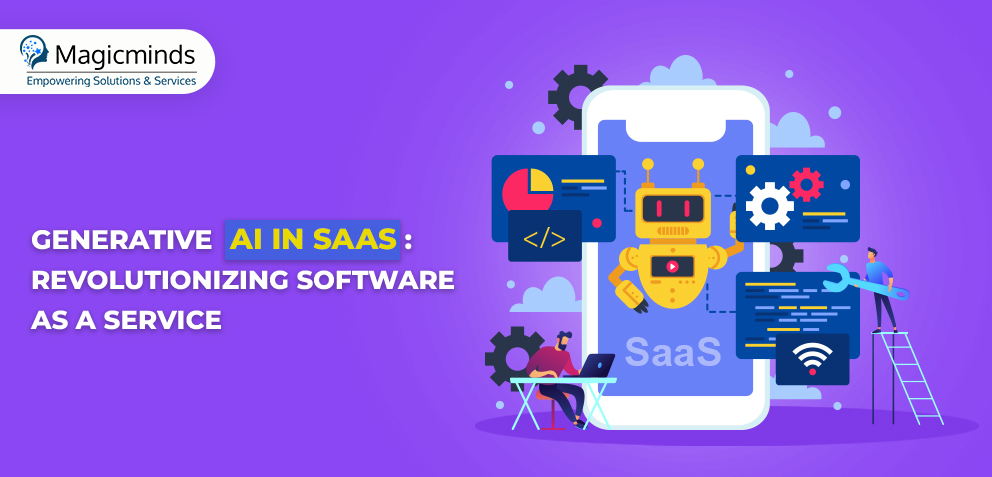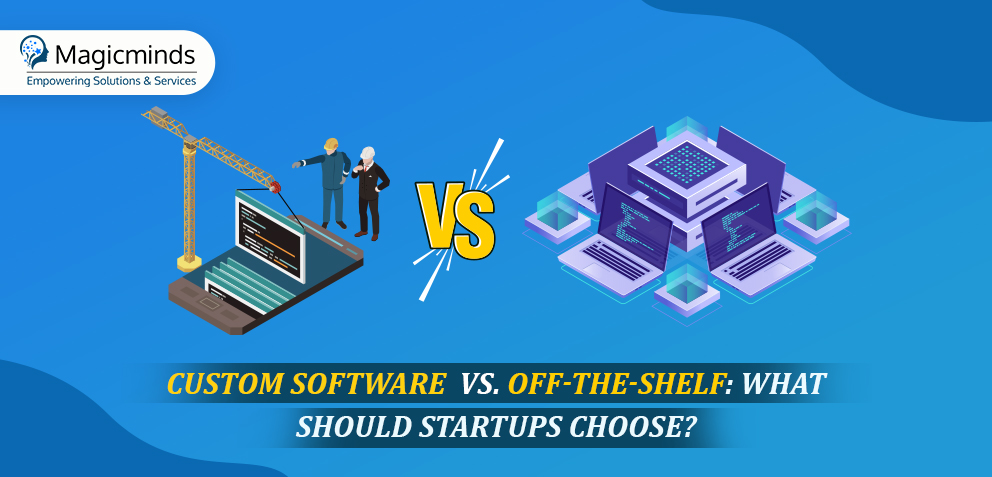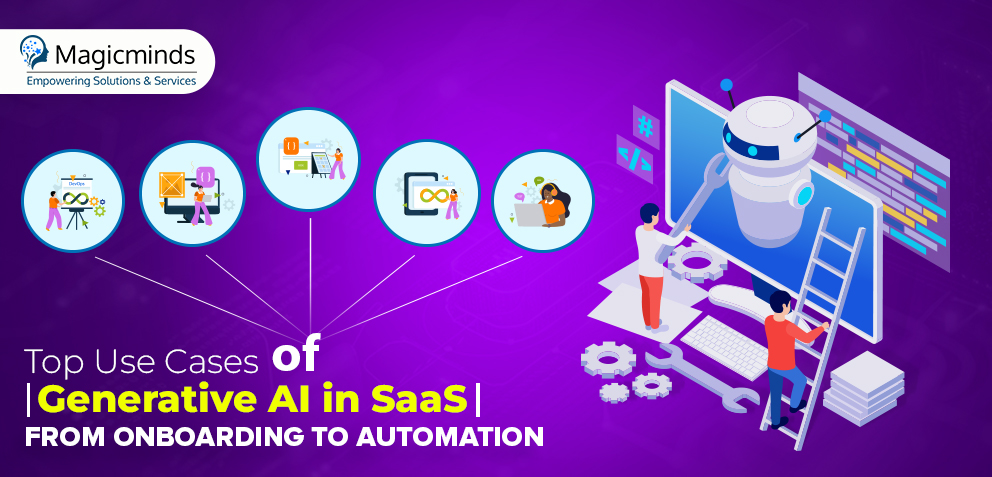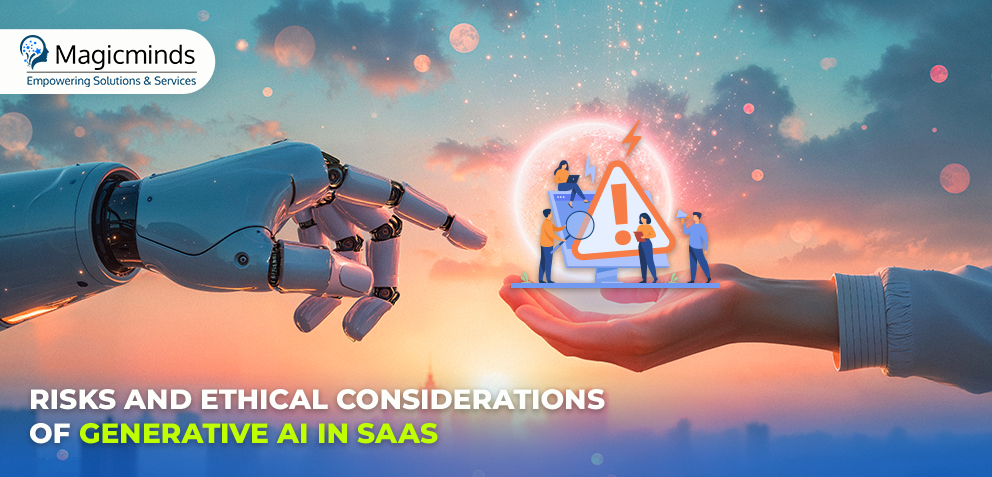Generative AI in SaaS: Revolutionizing Software as a Service

 Stay In-the-loop
Stay In-the-loop
Get fresh tech & marketing insights delivered right to your inbox.
Share this Article
Tags
Category
- .Net Developer
- Adtech
- Android App Development
- API
- App Store
- Artificial Intelligence
- Blockchain Development
- Chatbot Development
- CMS Development
- Cybersecurity
- Data Security
- Dedicated Developers
- Digital Marketing
- Ecommerce Development
- Edtech
- Fintech
- Flutter app development
- Full Stack Development
- Healthcare Tech
- Hybrid App Development
- iOS App Development
- IT Project Management
- JavaScript development
- Laravel Development
- Magento Development
- MEAN Stack Developer
- MERN Stack Developer
- Mobile App
- Mobile App Development
- Nodejs Development
- Progressive Web Application
- python development
- QA and testing
- Quality Engineering
- React Native
- SaaS
- SEO
- Shopify Development
- Software Development
- Software Outsourcing
- Staff Augmentation
- UI/UX Development
- Web analytics tools
- Wordpress Development
Artificial intelligence (AI) these days isn’t just about routine number-crunching or simple filters (think spam blockers or the engines recommending your next binge-watch). Imagine a tool that predicts trends and steps in to create something entirely new. It feels like a creative revolution hidden inside software.
Sure, traditional systems learn from old data to sort and decide, but generative AI takes it further. Generally speaking, it digs deep into the patterns and builds something original out of that mix—be it text, images, audio, video, or even lines of code.
Though it has been figured out where the output seems to wander off into human-like quirks, sometimes repeating phrases or casually shifting tone—a bit confusing, perhaps, but that’s what gives it a genuine feel.
This capability rapidly transforms software as a service (SaaS) products, offering unprecedented opportunities for innovation and user engagement. We will be exploring the generative AI’s meaning in detail and its functionalities within the SaaS ecosystem.
AI vs. Generative AI: Understanding the Distinction
Both forms live under the AI umbrella, yet they operate on different wavelengths. The typical AI is busy predicting and classifying, while generative AI combines technical expertise with creative spontaneity. It learns from the underlying structures and then, almost unpredictably, crafts new content. This blend of method and creativity changes how SaaS products evolve, offering surprises at every turn.
Ultimately, observing the convergence of SaaS and generative AI is quite captivating. It’s not simply about automating a task; it’s a shift toward software that interacts in fresh, unexpected ways—mixing raw tech, including text, images, audio, video, and even code, with that unmistakably human touch.
Grow Faster and Unlock Your Potential with AI & ML Development Services
Transform your business with cutting-edge AI and ML solutions.
Core Mechanisms: LLMs, GANs, Diffusion Models
Generative AI runs on a mix of intricate models. Digging into these basic building blocks not only helps you see how SaaS products tick, but it also opens up a surprisingly candid look at the layers of complexity that might otherwise go unnoticed.
Here’s an insight into what generative AI is in SaaS and how these systems operate within SaaS products:
Large Language Models (LLMs)
GPT-3 and its kin are built on enormous collections of text—they soak up everything from casual blogs to formal articles. These systems, in most cases, pick up on how words work together and then churn out text that sounds pretty natural. It is sometimes intriguing how they manage to produce content that can pass as human writing, whether it’s for writing articles, powering chatbots, or even summarizing stuff on SaaS platforms.
Generative Adversarial Networks (GANs)
GANs function through a distinct push-and-pull mechanism. They mix two networks—a generator that produces synthetic content and a discriminator that steps in to judge if it feels genuine. It’s like watching a heated debate where one side keeps pushing the other to get more realistic. It’s fascinating that this kind of back-and-forth shows up in many SaaS applications, especially when it comes to generating images, videos, and even adding a little extra data here and there.
Diffusion Models
Lastly, there’s another approach where models learn to undo a process that slowly adds noise to data. They learn how to denoise, meaning they find their way back to authenticity by recreating high-quality images. Diffusion models are slowly gaining ground in the SaaS world, mainly where crisp, realistic image generation and editing are key. Mixing these technical turns with a bit of creative spontaneity makes you appreciate how art meets technology in unexpected ways.
Role of Generative AI in Software Development
Generative AI is slowly turning into an invaluable tool in the software development lifecycle, particularly within SaaS environments. Let’s take a look at how generative AI works in SAAS development:
Code Generation
AI can assist developers by generating boilerplate code, suggesting code completions, and even creating entire functions based on natural language descriptions. This feature accelerates development and reduces repetitive tasks within SaaS development pipelines.
Automated Testing
Generative AI can create diverse test cases automatically, ensuring broader test coverage and identifying potential bugs more efficiently in SaaS applications.
UI/UX Design Assistance
AI tools can generate design mock-ups and suggest layout improvements based on user data and design principles, aiding in the creation of more intuitive SaaS interfaces.
Why SaaS is Adopting Generative AI
SaaS’s inherent nature, powered by its cloud-based delivery and subscription model, transforms it into a fertile ground for generative AI adoption:
Scalability
Integrating generative AI into cloud services is straightforward these days—SaaS providers are quickly leaning in to boost their features for a broad audience. Most companies place these models right into their cloud systems so that advanced AI capabilities roll out without too much hassle.
Personalization
Personalization brings the real magic. Generative AI isn’t only about churning out content; it’s about crafting tailored experiences and suggestions for every user. It feels almost like the system is silently noticing your little quirks, making the experience feel a bit more human and engaging.
Efficiency Gains
The second aspect is the automation side, using AI to handle content creation, code generation, and even testing. This approach smooths out day-to-day workflows (sometimes in ways you wouldn’t expect) and cuts down on operational expenses, freeing up teams to focus on the creative stuff. It’s a smart move that brings both efficiency and a touch of personal care to the tech world.
Key Benefits for SaaS Companies
Generative AI integration calls for several compelling advantages for SaaS businesses. Some of them are:
Heightened User Connection
When content is tailored to the individual, users tend to stick around longer—there’s something almost natural about it. Personal touches on SaaS platforms seem to spark interaction without any fanfare, drawing people in and making them feel genuinely valued.
Speedier Feature Rollouts
AI-backed tools frequently expedite the release of new features, creating a seamless experience at times. It seems refreshing how these systems churn out updates quickly, making the whole process feel less like a drawn-out plan and more like an impromptu creative leap.
Fresh Revenue Paths
Generative AI isn’t only about streamlining work—it also opens up unexpected ways to earn money, like powering new premium features or services. Thus, adding these extra layers can shake up the traditional SaaS model, offering a twist that feels both innovative and improves the readability score.
Better Customer Help
When it comes to support, the AI-powered chatbots and auto-generated responses quietly perform a significant amount of work. They tend to offer faster, more responsive help, which makes a real difference for users. Occasionally, this extra bit of efficiency, despite occasional quirks in phrasing or timing, ends up smoothing over many common issues.
In Conclusion
Generative AI is not just about processing data; it is transitioning into a creative mode that challenges our expectations of artificial intelligence. Generative SaaS products are getting a whole lot more personal and nimble, whether it’s churning out content or building software; they’re suddenly more efficient and inventive, too.
With these smart tools constantly evolving, the entire SaaS scene is bound to surprise us in ways we haven’t even mapped out yet. And if you’re after a cloud platform that can keep pace with such forward-thinking generative AI architectural technology, Magicminds might just be the kind of solid option you need.
Artificial intelligence (AI) these days isn’t just about routine number-crunching or simple filters (think spam blockers or the engines recommending your next binge-watch). Imagine a tool that predicts trends and steps in to create something entirely new. It feels like a creative revolution hidden inside software.
Sure, traditional systems learn from old data to sort and decide, but generative AI takes it further. Generally speaking, it digs deep into the patterns and builds something original out of that mix—be it text, images, audio, video, or even lines of code.
Though it has been figured out where the output seems to wander off into human-like quirks, sometimes repeating phrases or casually shifting tone—a bit confusing, perhaps, but that’s what gives it a genuine feel.
This capability rapidly transforms software as a service (SaaS) products, offering unprecedented opportunities for innovation and user engagement. We will be exploring the generative AI’s meaning in detail and its functionalities within the SaaS ecosystem.
AI vs. Generative AI: Understanding the Distinction
Both forms live under the AI umbrella, yet they operate on different wavelengths. The typical AI is busy predicting and classifying, while generative AI combines technical expertise with creative spontaneity. It learns from the underlying structures and then, almost unpredictably, crafts new content. This blend of method and creativity changes how SaaS products evolve, offering surprises at every turn.
Ultimately, observing the convergence of SaaS and generative AI is quite captivating. It’s not simply about automating a task; it’s a shift toward software that interacts in fresh, unexpected ways—mixing raw tech, including text, images, audio, video, and even code, with that unmistakably human touch.
Core Mechanisms: LLMs, GANs, Diffusion Models
Generative AI runs on a mix of intricate models. Digging into these basic building blocks not only helps you see how SaaS products tick, but it also opens up a surprisingly candid look at the layers of complexity that might otherwise go unnoticed.
Here’s an insight into what generative AI is in SaaS and how these systems operate within SaaS products:
Large Language Models (LLMs)
GPT-3 and its kin are built on enormous collections of text—they soak up everything from casual blogs to formal articles. These systems, in most cases, pick up on how words work together and then churn out text that sounds pretty natural. It is sometimes intriguing how they manage to produce content that can pass as human writing, whether it’s for writing articles, powering chatbots, or even summarizing stuff on SaaS platforms.
Generative Adversarial Networks (GANs)
GANs function through a distinct push-and-pull mechanism. They mix two networks—a generator that produces synthetic content and a discriminator that steps in to judge if it feels genuine. It’s like watching a heated debate where one side keeps pushing the other to get more realistic. It’s fascinating that this kind of back-and-forth shows up in many SaaS applications, especially when it comes to generating images, videos, and even adding a little extra data here and there.
Diffusion Models
Lastly, there’s another approach where models learn to undo a process that slowly adds noise to data. They learn how to denoise, meaning they find their way back to authenticity by recreating high-quality images. Diffusion models are slowly gaining ground in the SaaS world, mainly where crisp, realistic image generation and editing are key. Mixing these technical turns with a bit of creative spontaneity makes you appreciate how art meets technology in unexpected ways.
Role of Generative AI in Software Development
Generative AI is slowly turning into an invaluable tool in the software development lifecycle, particularly within SaaS environments. Let’s take a look at how generative AI works in SAAS development:
Code Generation
AI can assist developers by generating boilerplate code, suggesting code completions, and even creating entire functions based on natural language descriptions. This feature accelerates development and reduces repetitive tasks within SaaS development pipelines.
Automated Testing
Generative AI can create diverse test cases automatically, ensuring broader test coverage and identifying potential bugs more efficiently in SaaS applications.
UI/UX Design Assistance
AI tools can generate design mock-ups and suggest layout improvements based on user data and design principles, aiding in the creation of more intuitive SaaS interfaces.
Why SaaS is Adopting Generative AI
SaaS’s inherent nature, powered by its cloud-based delivery and subscription model, transforms it into a fertile ground for generative AI adoption:
Scalability
Integrating generative AI into cloud services is straightforward these days—SaaS providers are quickly leaning in to boost their features for a broad audience. Most companies place these models right into their cloud systems so that advanced AI capabilities roll out without too much hassle.
Personalization
Personalization brings the real magic. Generative AI isn’t only about churning out content; it’s about crafting tailored experiences and suggestions for every user. It feels almost like the system is silently noticing your little quirks, making the experience feel a bit more human and engaging.
Efficiency Gains
The second aspect is the automation side, using AI to handle content creation, code generation, and even testing. This approach smooths out day-to-day workflows (sometimes in ways you wouldn’t expect) and cuts down on operational expenses, freeing up teams to focus on the creative stuff. It’s a smart move that brings both efficiency and a touch of personal care to the tech world.
Key Benefits for SaaS Companies
Generative AI integration calls for several compelling advantages for SaaS businesses. Some of them are:
Heightened User Connection
When content is tailored to the individual, users tend to stick around longer—there’s something almost natural about it. Personal touches on SaaS platforms seem to spark interaction without any fanfare, drawing people in and making them feel genuinely valued.
Speedier Feature Rollouts
AI-backed tools frequently expedite the release of new features, creating a seamless experience at times. It seems refreshing how these systems churn out updates quickly, making the whole process feel less like a drawn-out plan and more like an impromptu creative leap.
Fresh Revenue Paths
Generative AI isn’t only about streamlining work—it also opens up unexpected ways to earn money, like powering new premium features or services. Thus, adding these extra layers can shake up the traditional SaaS model, offering a twist that feels both innovative and improves the readability score.
Better Customer Help
When it comes to support, the AI-powered chatbots and auto-generated responses quietly perform a significant amount of work. They tend to offer faster, more responsive help, which makes a real difference for users. Occasionally, this extra bit of efficiency, despite occasional quirks in phrasing or timing, ends up smoothing over many common issues.
In Conclusion
Generative AI is not just about processing data; it is transitioning into a creative mode that challenges our expectations of artificial intelligence. Generative SaaS products are getting a whole lot more personal and nimble, whether it’s churning out content or building software; they’re suddenly more efficient and inventive, too.
With these smart tools constantly evolving, the entire SaaS scene is bound to surprise us in ways we haven’t even mapped out yet. And if you’re after a cloud platform that can keep pace with such forward-thinking generative AI architectural technology, Magicminds might just be the kind of solid option you need.


